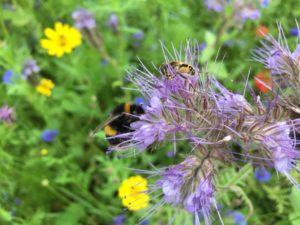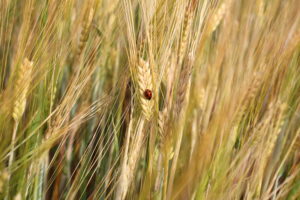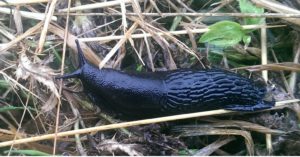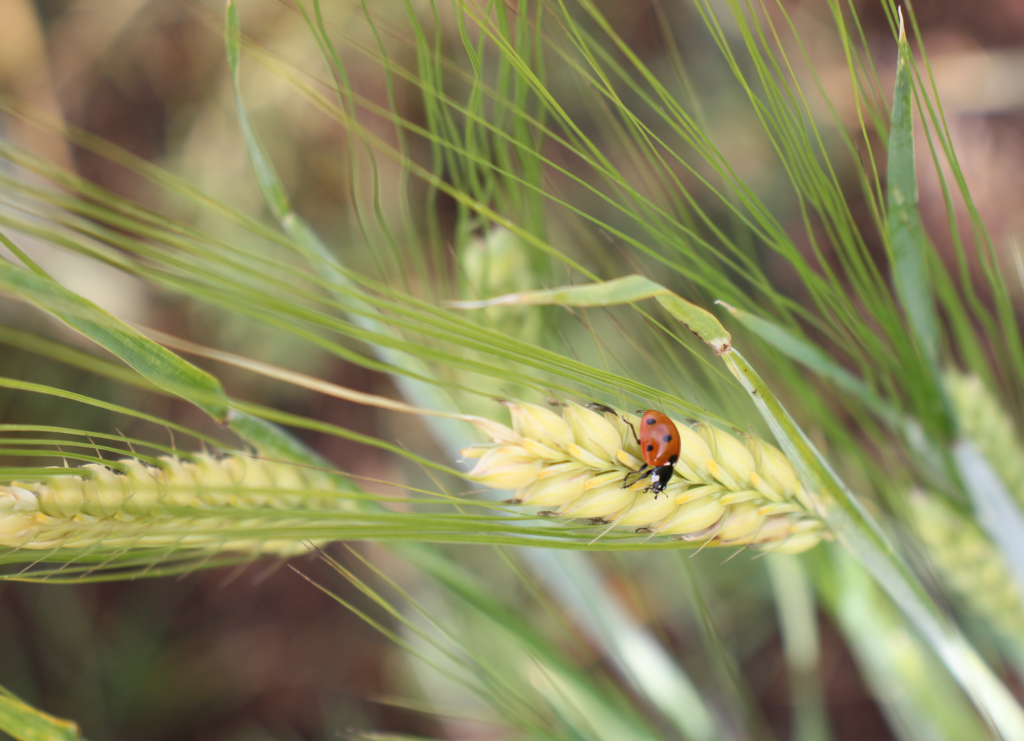Are you making the most of Integrated Pest Management?
24 August 2018Integrated Pest Management (IPM) is not a new idea in farming and many producers will be familiar with the concept through measures such as the pesticide industry’s Voluntary Initiative and the promotion of IPM through farm assurance schemes and advisory services. However, it is worth asking how many Scottish farmers are fully maximising the potential of the whole-farm approach to crop management that IPM offers? Some of the opportunities and barriers to uptake were discussed at a recent Farm Advisory Service  meeting at Scotston of Kirkside at St Cyrus, near Montrose.
meeting at Scotston of Kirkside at St Cyrus, near Montrose.
IPM seeks to provide a sustainable approach to the control of pests and diseases in crops by combining a range of tools at the whole-farm level. It is not about getting rid of pesticides, but using them in the most effective and targeted way possible. If IPM is successfully implemented this should result in lower pesticide applications in most years and the use of less harmful formulations, potentially resulting in financial savings for the grower as well as benefits to the environment.
Probably the best known and longest established IPM measures include monitoring of pests and diseases (both in individual crops and on a wider scale to provide forecasts), the use of thresholds for spraying and the targeted application of pesticides. These elements of IPM are widely used by the specialist arable sector, with regular crop-walking to check for pests and diseases and spray recommendations from a qualified agronomist being common practice. There are good examples of how thresholds for cereal pests are used to determine treatment in this article.
Making use of crop varietal resistance to diseases, crop rotation and crop sequence to reduce the risk of pest and disease outbreaks are also important elements of IPM that are used by many growers. However, there can be resistance among some farmers to moving away from tried and trusted crop varieties and rotations that may have been in place for a long time. The development of novel and less to xic pesticides and variable rate pesticide application also provide opportunities for reducing the environmental impact of crop management.
xic pesticides and variable rate pesticide application also provide opportunities for reducing the environmental impact of crop management.
Other cultural methods used in IPM include: delayed sowing to remove the green bridge that allows the transmission of pests and diseases such as the aphid-borne BYDV between successive crops; variation in seed rates to help crops compete in areas susceptible to weed or disease problems; deeper drilling of seed to prevent damage by soil pests such as slugs. Methods like these may also face barriers to uptake such as the cost of equipment available and (in the case of delayed sowing at northern latitudes like Scotland for example) climatic constraints that may not allow the flexibility required.
One aspect of IPM that has perhaps seen less widespread implementation to date is the consideration of the whole-farm ecosystem as a means to reducing the risk of pests and diseases reaching the threshold level that requires treatment. Pest and disease outbreaks in crops happen in part because arable land tends to be a highly disturbed and simplified ecosystem which lacks many of the checks and balances on pests and diseases that occur in more natural and complex ecosystems.
Enhancing the diversity of habitats on farms will increase the populations of beneficial insects such as ground beetles, hoverflies, parasitic wasps and ladybirds that will feed on pests and disease vectors such as slugs, leatherjackets and aphids, as well as the economically important pollinator species such as bees.
Agri-environmental measures are the key to enhancing habitat diversity and developing a robust and resilient arable ecosystem. Permanent field margins, hedges, pollinator mixes, wetlands and water margins can all play a part. Agri-environment schemes and ecological focus areas support this type of habitat management but in a truly holistic IPM strategy these areas s hould be considered as an integral part of the production system and managed to maximise their value for beneficial insects, rather than just as land set-aside from production.
hould be considered as an integral part of the production system and managed to maximise their value for beneficial insects, rather than just as land set-aside from production.
It is also important that an integrated approach to farm management does not ignore the soil ecosystem as soil is the most valuable resource on the farm. There is increasing interest in soil health, and ways of maintaining and enhancing soil chemistry, structure and biology. This includes cultivation systems, minimising and rectifying compaction, organic and inorganic fertiliser applications and the use of green manures. Healthy soil will result in healthier and more resilient crops that can resist pests and diseases more effectively, and it is possible that soil-borne pest and disease outbreaks are less likely in biologically healthy soils.
While the holistic approach to managing the whole farm and soil ecosystem may well reduce the risk that pests and diseases will reach threshold levels it will not always do so and the other, technical elements of the IPM toolbox will be required. This could include the use of pesticides that may harm the beneficial insects that are being encouraged through habitat management. As a result, growers may need to assess and balance the level of pest or disease risk that they are willing to accept against the long-term risk to the beneficial insects.
Most arable farmers are undertaking elements of IPM within their farming systems, but while there may be barriers to uptake of some of the less conventional measures, it is always useful to ![]() take the opportunity to see how other farmers are managing such measures by talking to other growers and making the most of meetings and advisory events.
take the opportunity to see how other farmers are managing such measures by talking to other growers and making the most of meetings and advisory events.
Paul Chapman for the Farm Advisory Service
Sign up to the FAS newsletter
Receive updates on news, events and publications from Scotland’s Farm Advisory Service

